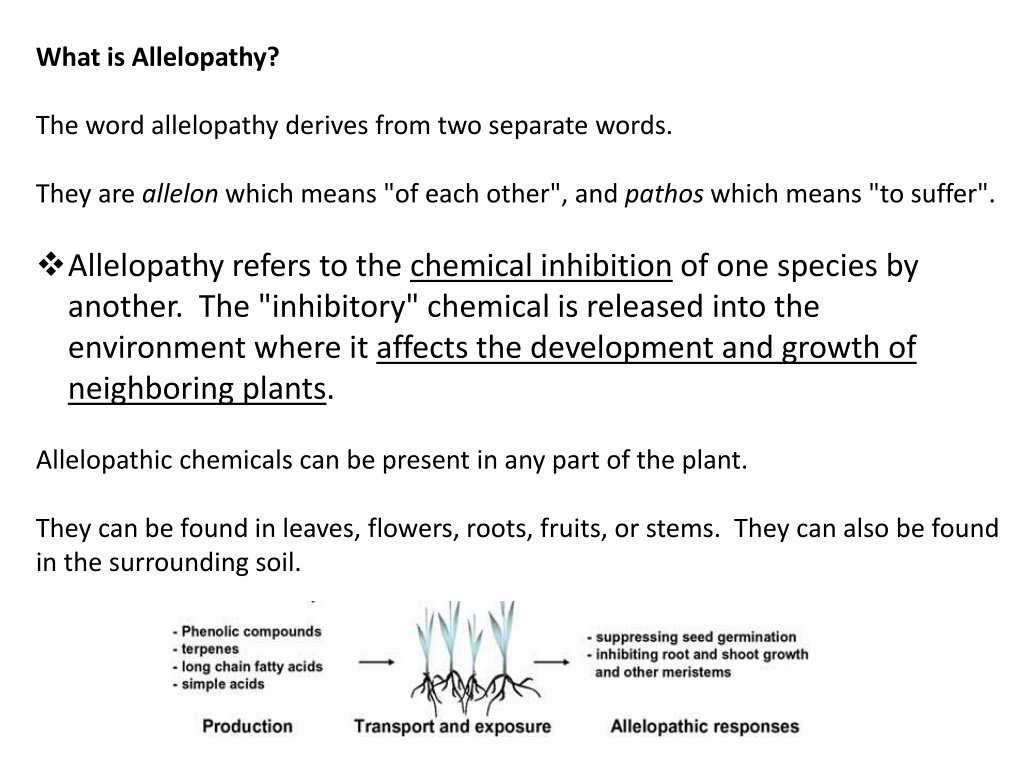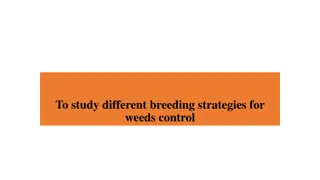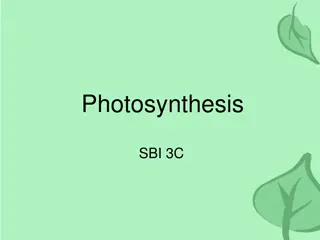Understanding Allelopathy: Chemical Interactions Among Plants
Allelopathy involves the chemical inhibition of one plant species by another, affecting growth and development. Target species may suffer from reduced growth, nutrient uptake, and disrupted symbiotic relationships due to allelopathic chemicals present in different plant parts and soil. Certain plants like Black Walnut, Tree-Of-Heaven, and Sorghum use allelopathy as chemical warfare in the plant kingdom. Studying allelopathy is crucial for understanding plant interactions and identifying beneficial implications for agriculture and ecosystem management to enhance planetary well-being.
Download Presentation

Please find below an Image/Link to download the presentation.
The content on the website is provided AS IS for your information and personal use only. It may not be sold, licensed, or shared on other websites without obtaining consent from the author. Download presentation by click this link. If you encounter any issues during the download, it is possible that the publisher has removed the file from their server.
E N D
Presentation Transcript
What is Allelopathy? The word allelopathy derives from two separate words. They are allelon which means "of each other", and pathos which means "to suffer". Allelopathy refers to the chemical inhibition of one species by another. The "inhibitory" chemical is released into the environment where it affects the development and growth of neighboring plants. Allelopathic chemicals can be present in any part of the plant. They can be found in leaves, flowers, roots, fruits, or stems. They can also be found in the surrounding soil.
Target species are affected by these toxins in many different ways. The toxic chemicals may inhibit shoot/root growth, they may inhibit nutrient uptake, or they may attack a naturally occurring symbiotic relationship thereby destroying the plant's usable source of a nutrient.
Chemical Warfare in the Plant Kingdom Black Walnut-The chemical responsible for the toxicity in Black Walnut is Juglone and is a respiration inhibitor. Tree-Of-Heaven-Ailanthone, an allelotoxin extracted from the root bark of Ailanthus. Sorghum- Sorgolene is found in the root and disrupts mitochondrial functions and inhibits photosynthesis.
Have you noticed allelopathy or allelopathic-like influences in your neighborhood? Elsewhere? Why is studying allelopathy important? What are some beneficial implications of allelopathy? How can these be usedfor the betterment of the planet?























